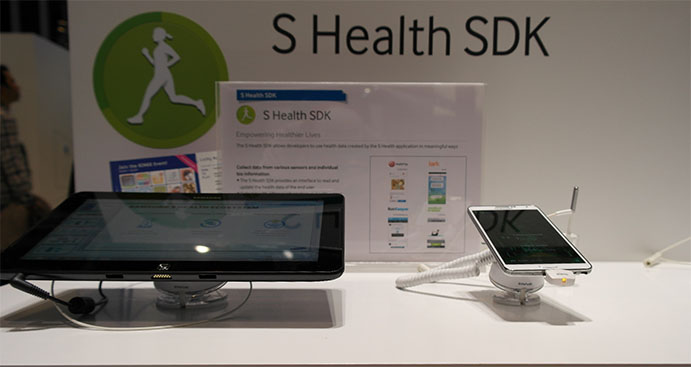3 Things You Need to Know about S Health SDK
on February 26, 2014
Just a few hours ago, at the Samsung Developer Day, many of the new Samsung SDKs have been announced. Among all the new SDKs that the developers are excited about, there is one Samsung SDK that deals with the one of the most important factors in determining your quality of life: S Health SDK. S Health SDK hasn’t been made public, until now. With the still fresh-out-of-oven announcement of the Galaxy S5, the new availability of the S Health SDK is unquestionably exciting news. So, let’s get right to the point now; here are the key points about the S Health SDK from the Developer Day 2014.
1. Health Related Mobile App has a lot of potential
At the keynote speech of the Developer Day, it was said that by 2015, the number of mobile health app users would reach 500 million people. Currently, out of all the health related app users, 57% are general consumers. Considering people are expected to live to about 100 years in the near future, it is not so difficult to imagine that mobile health app is a promising area.
2. There are two different kinds of S Health SDK
-Client SDK-
S Health SDK could be grouped into two different categories: Client SDK and Service SDK. For the S Health SDK and health related apps, first, it is important for the apps to have an interface that could utilize the sensor inputs to digitize health information into data. S Health Client SDK provides the interface to the internal and external sensors that store the data in the local DB. It also uses the standard interface, such as ANT+ which has plenty of access to various sensor devices on the market. Therefore, the developers can utilize plenty of resources. You can find Client SDK as Health package in Samsung Mobile SDK 1.5’
-Service SDK-
Secondly, mobile health apps need to be able to provide accurate analysis or suggestions to the user; therefore, the quality of data is important. All the data that is collected by the S Health Client SDK is saved in Samsung’s secure PHR, or personal health records. PHR data contains whatever health data that could be collected using the S Health SDK such as biological data, exercise log data, food ingestion data, and sleep/stress log data, and all these records are secured. However, in order to comply with HIPAA (Health Insurance Portability and Accessibility Act), S Health Service SDK, or Service SDK provides full accessibility to the Open API server, including PHR server, service servers, and statistical data server.
Basically, it synchronizes the open API server and PHR DB with the data from the local DB collected by the Client SDK. For the Service SDK, the manual input from outside or the internal sources from the 3rd party app will be directly connected to the 72 different APIs and it will be transmitted to the open API server and 4 different service managers can be accessed through Service SDK.
3. Utilize the Motion package in Samsung Mobile SDK
For many mobile health apps, it is important to collect data while the users of the app are moving, such as when they are exercising. Motion package can recognize the users’ movement, but this time, using the low-power technology, recognition has been upgraded to a point where the Motion package can recognize the level of activity, such as whether you are stationary, walking, running and or in a vehicle. The 3rd party developers also have the access to the data collected by Motion package to make a more powerful health app.
Based on the announcement of the basic features of the S Health SDK, as a developer, it should excite you that you can get access to the data in PHR server (not the actual detail information of the data, but the data as a category, the personal information is not accessible). It will give you plenty of data to work with to make a very customized health app that people are looking for. After all, what is better than developing an app that could improve people’s quality of life?


